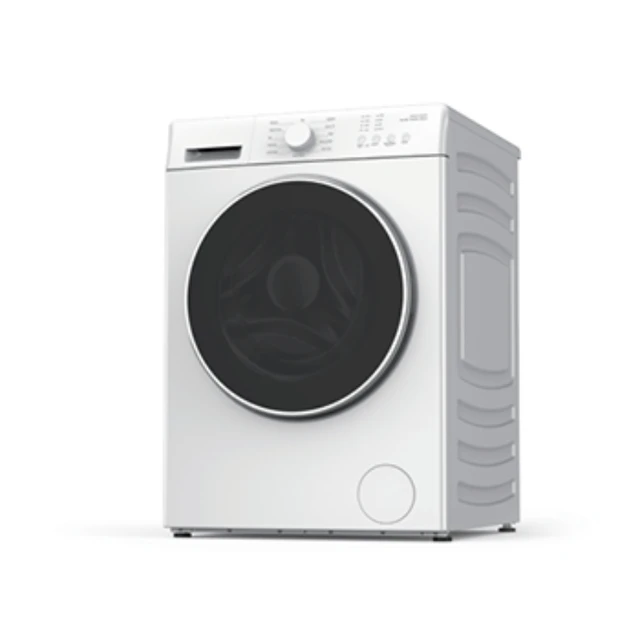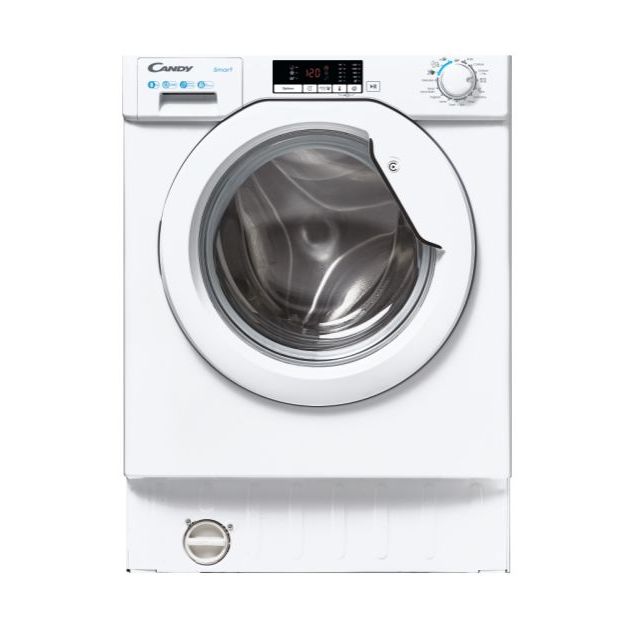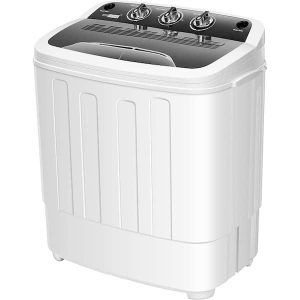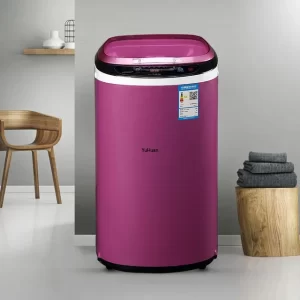How Much Electricity Does a Washing Machine Use?
Introduction:
In 2024 understanding how much electricity your washing machine uses is crucial for managing household energy consumption and reducing utility bills. Different models, settings, and usage patterns affect the energy consumption of washing machines. This comprehensive guide breaks down the factors influencing electricity usage, offers tips for energy efficiency, and provides answers to common questions about the electricity consumption of washing machines.

How Much Electricity Does a Washing Machine Use?
Understanding Energy Consumption of Washing Machines
Electricity usage for washing machines varies based on several factors, including the model, load size, cycle settings, and frequency of use.
Average Power Usage: Most washing machines use between 400 to 1,400 watts of power per cycle. High-efficiency models typically consume less electricity, while older or less efficient models use more.
Energy Star Ratings: Energy Star-rated washing machines are designed to be more energy-efficient. These models use approximately 25% less energy and significantly less water compared to standard models. The Energy Star label ensures that the appliance meets strict energy efficiency guidelines set by the U.S. Environmental Protection Agency (EPA).
Load Size and Frequency: The size of the load and the frequency of usage impact electricity consumption. Larger loads require more energy to heat water, agitate clothes, and spin-dry the laundry. However, washing small loads frequently can also increase total energy usage over time.
Cycle Settings and Options: Different cycle settings, such as water temperature, spin speed, and additional rinse cycles, influence electricity consumption. Hot water cycles use more energy to heat the water compared to cold or warm cycles.

Washing machine electricity usage
To estimate the electricity cost of running a washing machine, you can use a simple formula that considers the power rating of the machine, the duration of the cycle, and your electricity rates.
Power Rating (Watts): Identify the power rating of your washing machine, typically listed on the appliance label or in the user manual.
Cycle Duration (Hours): Determine the average duration of a washing machine cycle in hours. For instance, a typical cycle might last 1 to 1.5 hours.
Electricity Rate (kWh): Find your electricity rate, which is usually listed on your utility bill, measured in kilowatt-hours (kWh).
Calculation Formula: Use the formula: (Watts × Hours ÷ 1000) × Electricity Rate = Cost per Cycle For example, if your washing machine uses 1,000 watts, runs for 1.5 hours, and your electricity rate is $0.12 per kWh, the cost per cycle would be: (1000 × 1.5 ÷ 1000) × 0.12 = $0.18
Factors Affecting Energy Consumption
Several factors influence the amount of electricity a washing machine uses. Understanding these factors can help optimize energy efficiency.
Load Size: Washing machines are most efficient when used with full loads. Washing partial loads consumes more energy per pound of laundry as the machine uses nearly the same amount of energy regardless of the load size.
Water Temperature: Heating water accounts for a significant portion of the energy consumption during a wash cycle. Using cold water settings greatly reduces electricity usage, as the machine doesn’t need to heat the water.
Cycle Length and Speed: Longer or intensive cycles use more energy. High-speed spin cycles extract more water, reducing the energy needed for drying. However, these cycles may consume more electricity.
Energy Efficiency and Technology: Modern washing machines with energy-efficient technologies, such as inverter motors and sensors for load detection, consume less electricity. These technologies optimize the washing process and adjust energy use accordingly.
Maintenance and Wear: A well-maintained washing machine operates more efficiently. Regular maintenance, such as cleaning filters and checking for leaks, ensures that the machine doesn’t work harder than necessary, thereby saving energy.
Efficiency Rating
Modern washing machines are labeled with an Energy Efficiency Rating, typically ranging from A+++ (most efficient) to D (least efficient). An A+++ rated machine consumes significantly less energy than a D-rated one. Energy-efficient models use advanced technology to reduce water and energy consumption without compromising cleaning performance.
Capacity and Load Size
Washing machines come in various capacities, typically measured in kilograms (kg) of dry clothes they can handle. Running a machine at full capacity is more energy-efficient than running smaller loads. Underloading or overloading can both increase energy usage. As a rule of thumb, filling the machine to around 80% of its capacity strikes a balance between efficiency and cleaning effectiveness.
Cycle Type and Duration
Different wash cycles consume varying amounts of electricity. Generally, longer and hotter cycles use more energy. For example, a quick wash cycle uses less energy than a heavy-duty cycle, and a cold water wash saves more energy than a hot water one. The spin speed also affects energy use, with faster spins requiring more power but reducing drying time.
Age of the Machine
Older washing machines tend to be less energy-efficient compared to newer models. Advances in technology have significantly reduced the energy consumption of modern appliances. Upgrading to a new, energy-efficient machine can lead to substantial savings over its lifetime.
Typical Electricity Consumption
On average, a standard-sized (7-8 kg capacity) washing machine in the UK or Europe uses around 2.3 kWh (kilowatt-hours) per cycle. However, this figure can vary widely based on the factors mentioned earlier. In the US, where energy ratings differ, an Energy Star certified washer typically uses around 0.12 kWh per cubic foot of capacity per cycle.
Calculating Your Costs
To calculate the cost of running your washing machine, you’ll need to know its kWh consumption per cycle and your electricity rate. For example, if your machine uses 2.3 kWh per cycle and your electricity rate is $0.12 per kWh, the cost per load would be approximately $0.28 (2.3 kWh x $0.12/kWh).
Energy-Saving Tips
- Run full loads whenever possible.
- Choose the appropriate cycle for the level of soiling to avoid unnecessary energy use.
- Opt for cold water washes when feasible.
- Regularly clean the machine’s filter and drum to maintain efficiency.
- Upgrade to an energy-efficient model, especially if your current machine is over a decade old.
- Use a delayed start function to take advantage of off-peak energy rates, if available in your area.

Energy-Saving Tips for Washing Machines
Optimizing energy efficiency not only reduces electricity bills but also minimizes environmental impact. Here are some practical tips to save energy when using your washing machine.
Use Cold Water: Opt for cold water settings whenever possible. Modern detergents are designed to work effectively at lower temperatures, ensuring clothes are cleaned efficiently without the need for hot water.
Full Loads: Run the washing machine with full loads to maximize energy efficiency. Avoid overloading the machine, which can reduce cleaning performance and strain the motor.
Choose Energy-Efficient Models: Invest in Energy Star-rated washing machines that consume less electricity and water. These models are designed with advanced features to optimize energy use.
Optimal Cycle Settings: Select shorter cycles and use high-spin speeds to reduce drying time. Eco modes or energy-saving settings on your washing machine are tailored to minimize energy consumption.
Regular Maintenance: Perform regular maintenance, such as cleaning the lint filter, checking hoses for leaks, and ensuring the drum is clean. Well-maintained machines operate more efficiently and use less energy.
Flexible Washing Cycles: Utilize flexible washing cycles that allow for delayed starts during off-peak hours when electricity rates are lower. This practice helps reduce energy costs.
Comparing Front-Loading and Top-Loading Machines
The type of washing machine—front-loading or top-loading—affects electricity consumption. Here’s a comparison of their energy efficiency attributes.
Front-Loading Machines: Front-loading washing machines are generally more energy-efficient than top-loading models. They use less water and require less energy to heat the water. The horizontal drum design tumbles clothes, using gravity to assist in agitation, which saves energy.
Top-Loading Machines: Traditional top-loading washing machines use more water and energy. However, modern high-efficiency top-loading models have improved significantly, using less water and incorporating advanced technologies for optimized performance.
Detailed Comparison: Water Usage: Front-loaders use about 40% less water than top-loaders. Energy Efficiency: Front-loaders are typically 25-30% more energy-efficient. Cycle Length: Front-loaders may have longer cycle times but compensate with reduced drying times.

Environmental Impact of Washing Machines
Understanding the environmental impact of your washing machine helps make informed decisions about energy use and sustainability.
Carbon Footprint: Electricity generation, particularly from non-renewable sources, contributes to carbon emissions. By reducing electricity consumption, you help lower your household’s carbon footprint.
Water Conservation: Efficient water usage is vital for sustainability. Front-loading washing machines use significantly less water, aiding conservation efforts and reducing the strain on local water resources.
Energy Star Certification: Choosing Energy Star-certified appliances ensures compliance with stringent energy efficiency guidelines, promoting sustainable practices and reducing environmental impact.

Conclusion
Understanding the electricity consumption of your washing machine and optimizing its usage can lead to significant energy savings and a reduced environmental footprint. By considering factors such as load size, cycle settings, and water temperature, you can make informed choices that enhance energy efficiency. Regular maintenance and opting for energy-efficient models further contribute to sustainability and cost savings. Addressing common questions and incorporating practical energy-saving tips ensures that your washing machine operates efficiently, benefiting both your household and the environment. This comprehensive guide empowers you to manage your washing machine’s electricity usage effectively, promoting a more sustainable lifestyle.

